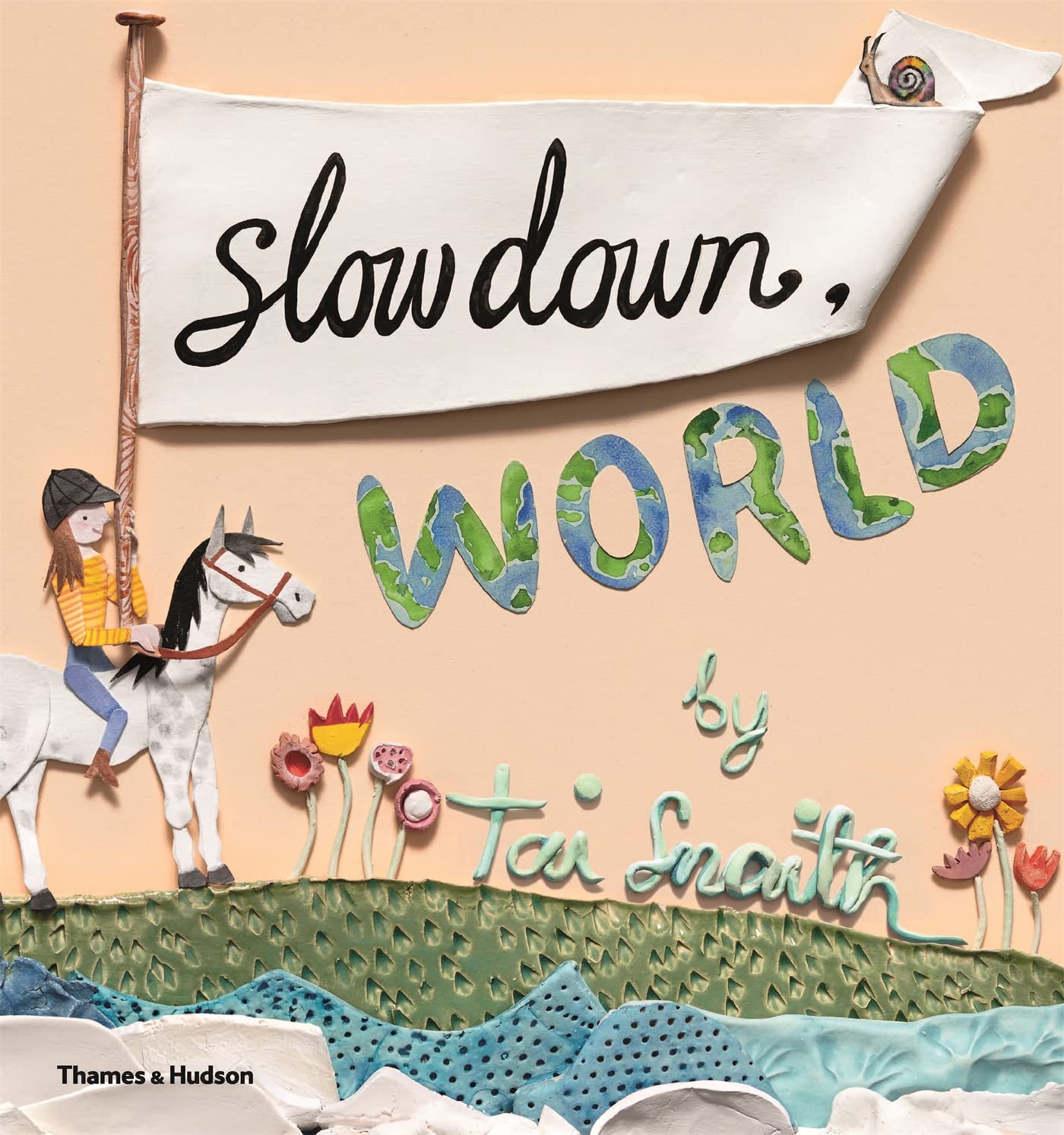Sometimes life can seem so busy. Quick! Hurry! Faster! With the world whizzing past, how often do we stop, look and appreciate what’s around us? From a fast-paced metropolis to the greener, magical places of a young girl’s imagination, Slow Down, World is a whimsical journey towards mindfulness. Charmingly illustrated and written from the heart, Tai Snaith captures the beauty of the slower things in life.

Slow Down, World
(9780500500941)
Written & illustrated by Tai Snaith
Published by Thames & Hudson Aust
Theme/topic: Emotional literacy, Mindfulness, and Resilience
Suggested learning area: ACPPS017 (Health and Physical Education – Year 1,Year 2), ACPPS020 (Health and Physical Education – Year 1,Year 2),
Slow Down, World is a gentle reminder to take time to enjoy the small moments in life. This beautifully illustrated book encourages young readers to explore strategies to stay positive, even during moments of discomfort or anxiety, such as slowing down and observing their surroundings (ACPPS017 – Foundation to Year 2, Health and Physical Education). Through its poetic and reflective tone, the story highlights the importance of mindfulness and finding calm amidst life’s busyness. By helping children practise emotional regulation strategies, such as deep breathing and focusing on nature’s details, the book supports resilience and staying positive in challenging situations (ACPPS020 – Years 1 and 2, Health and Physical Education). Its vivid illustrations and meaningful message make it an excellent resource for introducing mindfulness practices to young learners, fostering their emotional well-being and self-awareness.
Curriculum Alignment:
- These AC codes are suggested purely based on the book’s content and are provided for reference only.
ACPPS017 8.4 (Health and Physical Education Year 1,Year 2): Practise strategies they can use when they feel uncomfortable, unsafe or need help with a task, problem or situation
• identifying and rehearsing strategies they can use when requiring assistance, such as asking an adult, reading basic signs and solving a problem with friends
• locating and recording phone numbers of local organisations they can contact in case of emergency and rehearsing a phone call to triple zero
• identifying situations that require the help of emergency service
• recognising photos and locations of safe places and a network of people who can help
• describing warning signs (physical, emotional and external) that can help them to know if they are safe or unsafe
ACPPS020 8.4 (Health and Physical Education Year 1,Year 2): Identify and practise emotional responses that account for own and others’ feelings
• recognising own emotions and demonstrating positive ways to react in different situations
• identifying the body’s reaction to a range of situations, including safe and unsafe situations, and comparing the different emotional responses
• predicting how a person or character might be feeling based on the words they use, their facial expressions and body language
• understanding how a person’s reaction to a situation can affect others’ feelings











